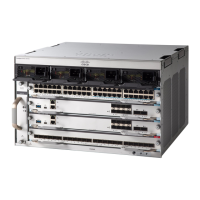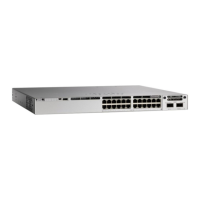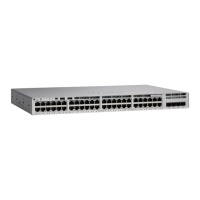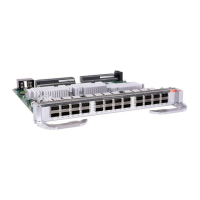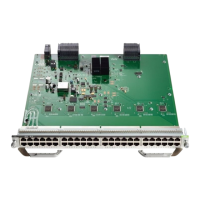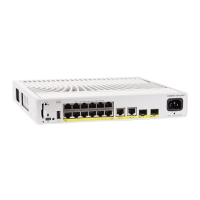PurposeCommand or Action
Enables an EIGRP routing process, and enter router
configuration mode. The AS number identifies the
router eigrp autonomous-system
Example:
Device(config)# router eigrp 10
Step 2
routes to other EIGRP routers and is used to tag
routing information.
(Optional) Enables EIGRP NSF. Enter this command
on the stack master and on all of its peers.
nsf
Example:
Device(config)# nsf
Step 3
Associate networks with an EIGRP routing process.
EIGRP sends updates to the interfaces in the specified
networks.
network network-number
Example:
Device(config)# network 192.168.0.0
Step 4
(Optional) Enables logging of EIGRP neighbor
changes to monitor routing system stability.
eigrp log-neighbor-changes
Example:
Device(config)# eigrp
log-neighbor-changes
Step 5
(Optional) Adjust the EIGRP metric. Although the
defaults have been carefully set to provide excellent
operation in most networks, you can adjust them.
metric weights tos k1 k2 k3 k4 k5
Example:
Device(config)# metric weights 0 2
0 2 0 0
Step 6
Setting metrics is complex and is not
recommended without guidance from an
experienced network designer.
Caution
(Optional) Applies an offset list to routing metrics to
increase incoming and outgoing metrics to routes
offset-list [access-list number | name] {in
| out} offset [type number]
Step 7
learned through EIGRP. You can limit the offset list
with an access list or an interface.
Example:
Device(config)# offset-list 21 out
10
(Optional) Enables automatic summarization of
subnet routes into network-level routes.
auto-summary
Example:
Device(config)# auto-summary
Step 8
(Optional) Configures a summary aggregate.ip summary-address eigrp
autonomous-system-number address mask
Step 9
Example:
Device(config)# ip summary-address
eigrp 1 192.168.0.0 255.255.0.0
Routing Configuration Guide, Cisco IOS XE Everest 16.6.x (Catalyst 9500 Switches)
110
Configuring IP Unicast Routing
Configuring Basic EIGRP Parameters

